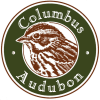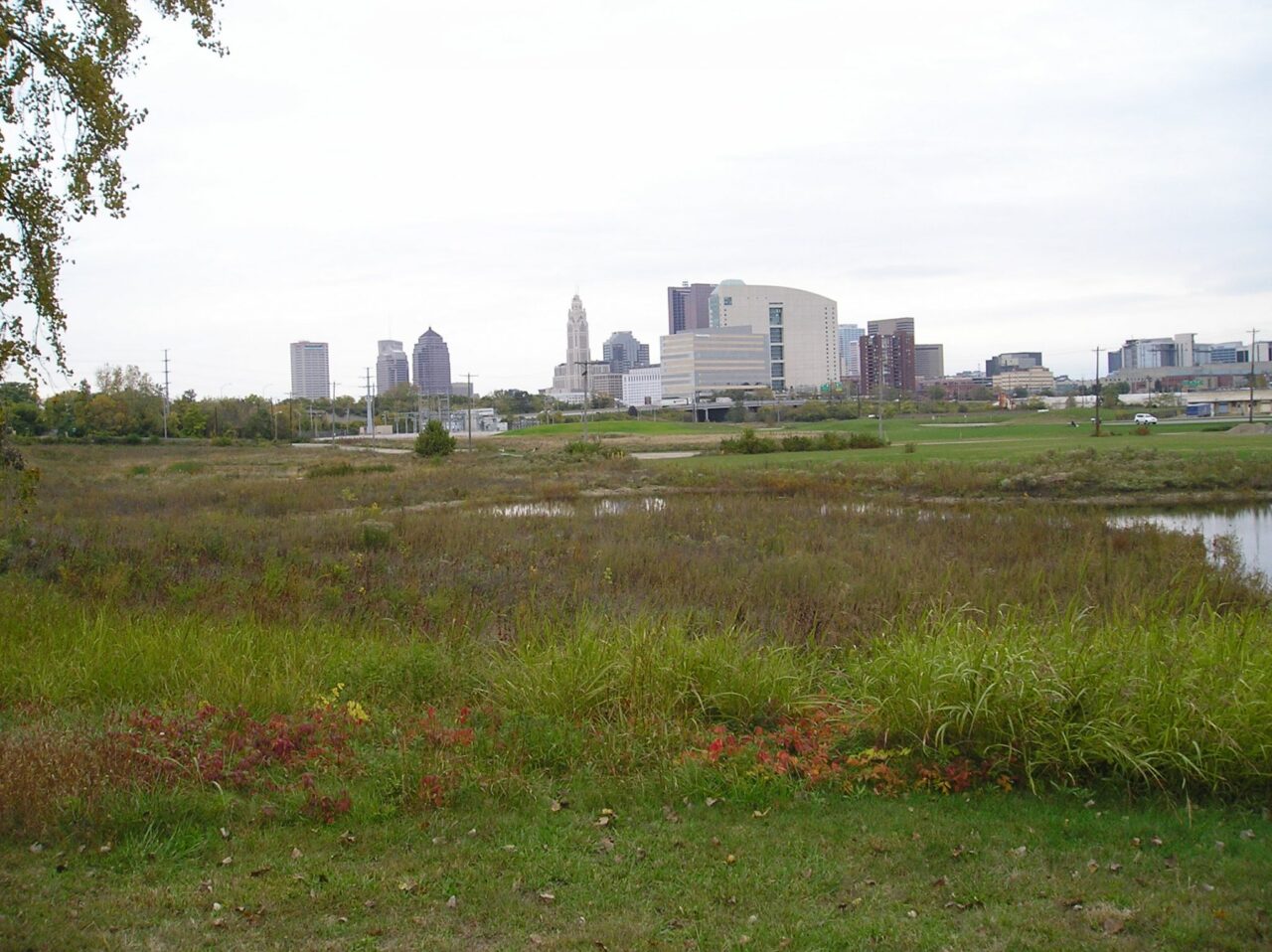As Fall migration shifts into its later stages, the emphasis falls on water- and field-birds. Waterfowl really push through in November and December, but already we’re finding field birds like kestrels & harriers, pipits, larks, sedge & marsh wrens, Common Yellowthroats, Palm & Orange-crowned Warblers, meadowlarks, and many sparrows. However, it can be a frustrating experience to bird rural fields, where the great expanse of open allows birds ample opportunity to avoid you. So how can you increase your chances of easily finding neat field birds in Ohio, a state where fields aren’t exactly rare? You need to go where these habitats are rare. One obvious example is the Erie shore, where development has squeezed the number of open acres down to a few well-known locales like Magee Marsh, Ottawa NWR, and Dike 14 in Cleveland. Here in central Ohio isolated fields are harder to field, but they do exist. Think about any fields in the urban core of Columbus. First, however, lets assess what the perfect ‘field trap’ contains.
An urban field is an oasis, in a perverse way. It’s an island of meadow or field habitat surrounded by buildings or yards. But think a bit more about our list of ‘field’ birds, and you’ll see that each of them want different types of fields. Some like short grass, others like fens or marshy swales, while still others like weeds or scrubby edges. In fact, as our knowledge of many of these birds has grown, we’ve realized how specialized are their habitat preferences. Sedge Wrens needs small patches of sedges (aha!), while Marsh Wrens prefer cattail stands. LeConte’s Sparrows seem to prefer moist areas with a mix of wet grasses and narrow-leafed smartweeds , while Nelson’s Sparrows like wetter areas with patches of sedges & broad-leaved smartweeds. Notice how these birds have neatly divided up wet field habitats. The same holds for dry field habitats, where bird options run from nearly open dirt (Horned Larks and Vesper Sparrows) all the way to shrubby overgrown meadows (Orange-crowned Warbler, Field & White-throated Sparrows). So for a field to be attractive to a diversity of birds, it needs to be more than just an open slab of Goldenrod. It needs to have a diversity of field ‘mini-habitats’.
I’ve already mentioned the fields at Sharon Woods in an earlier post, which are largely surrounded by suburban Columbus & Westerville. These fields have a great mix of different habitats. But let’s look even more urban; inside I-270 where fields are quite rare. Development pressures for businesses and housing have squeezed out almost all the major fields save for a few fields managed by parks. The southern edge of town still has lots of fields bordnering the outerbelt, but there are fields isolated in much more urban locations. Three good candidates spring to mind: Sullivant Trace, Waterman Farms, and Whittier-Scioto MetroPark.
Sullivant Trace is a linear field northwest of the ODOT building on West Broad Street (just at the base of the Hilltop neighborhood). It has a fascinating history, being perhaps the only remnant of the farms that once dotted the lowlands of Franklinton and formed the first real sttlement of Columbus. If you include neighboring Wolfe Park, it includes some open fields, meadows and an old overgrown floodwater retention basin, as well as a tiny strip of riparian woods along Dry Run. Despite its small size, it’s attracted a wide variety of field- and edge-birds, and it has not received much attention. It’s still waiting for some marquee birds to give it some recognition, but that’s sure to come.
Waterman Farms is the farm along the north side of Lane Avenue just west of Kenny Road at the western edge of the OSU campus. Managed by OSU as a teaching- and research farm, it’s a relic of the time when Columbus barely reached to campus and Clintonville was a separate entity. Back then farms were all over Upper Arlington and Linworth, but that’s not the case anymore as suburban development has filled in these areas. Now these fields are miles from the nearest farm, so it acts as a magnet to field birds flying through the area. The list of unusual field birds here is long. Savannah and Grasshopper Sparrows nest here, and a few have even wintered here. Practically every field bird you can find in Ohio has shown up here at one time or another. Park at the headquarters or the old Bee Lab along Carmack Road and walk the dirt road loop to the north and west to sample all the different fields and edges here, and prepare to be surprised.
Scioto-Whittier has less of a field history. The old city park here was strictly riverside, but did have a tiny meadow that attracted some interesting field birds. With the new MetroPark, however, has come a large expanse of field- and wet meadow, reclaimed from the old warehouses and decayed factories that occupied the low-lying peninsula. Look north from the new Grange Audubon center, and you’ll be surprised at the vista: a mosaic of lawn, field and wetlands with downtown Columbus as its backdrop. Already, these fields have started to attract good open-country birds. On recent trips there, we’ve found all the common field birds, as well as Kestrels, Horned Larks, Palm Warblers, and Lincolns Sparrows. Even a winter trip here should be productive, espcially since you can retreat to the comfort of the Grange Center afterwards. It’s probable that these fields will attract scads of rare and unusual field birds for central Ohio, given the habitat plans for them, so make plans to get out here and find those rarities.


